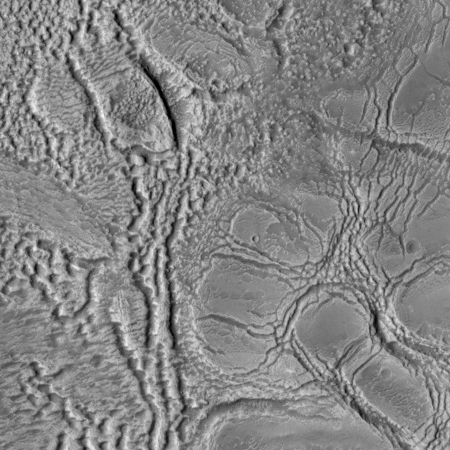Scientists resolve one Mars methane mystery
Scientists have now figured out why the methane data from Curiosity on the Martian surface did not match the methane data from Trace Gas Orbiter in orbit around Mars.
Last year, scientists learned that methane concentrations changed over the course of the seasons with a repeatable annual cycle. “This most recent work suggests that the methane concentration changes over the course of each day,” Dr Moores said. “We were able – for the first time – to calculate a single number for the rate of seepage of methane at Gale crater on Mars that is equivalent to an average of 2.8 kg per Martian day.”
Dr Moores said the team was able to reconcile the data from the ExoMars Trace Gas Orbiter and the Curiosity Rover, which appeared to contradict each other with wildly different detections of methane. “We were able to resolve these differences by showing how concentrations of methane were much lower in the atmosphere during the day and significantly higher near the planet’s surface at night, as heat transfer lessens,” he said.
Solving that data conflict helps them get a better grip on the real question: Why is the methane fluctuating in this manner?
Scientists have now figured out why the methane data from Curiosity on the Martian surface did not match the methane data from Trace Gas Orbiter in orbit around Mars.
Last year, scientists learned that methane concentrations changed over the course of the seasons with a repeatable annual cycle. “This most recent work suggests that the methane concentration changes over the course of each day,” Dr Moores said. “We were able – for the first time – to calculate a single number for the rate of seepage of methane at Gale crater on Mars that is equivalent to an average of 2.8 kg per Martian day.”
Dr Moores said the team was able to reconcile the data from the ExoMars Trace Gas Orbiter and the Curiosity Rover, which appeared to contradict each other with wildly different detections of methane. “We were able to resolve these differences by showing how concentrations of methane were much lower in the atmosphere during the day and significantly higher near the planet’s surface at night, as heat transfer lessens,” he said.
Solving that data conflict helps them get a better grip on the real question: Why is the methane fluctuating in this manner?





